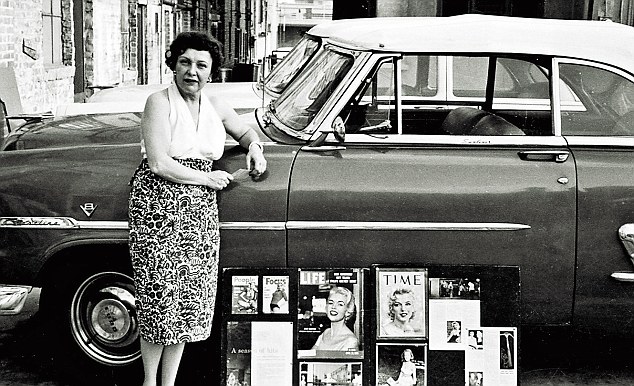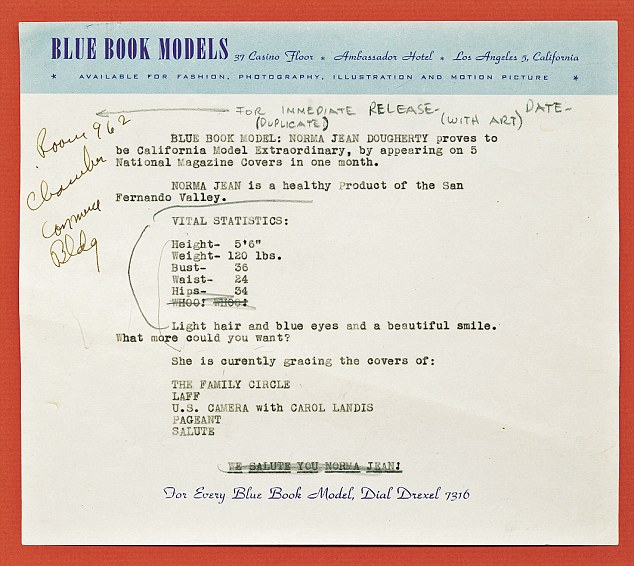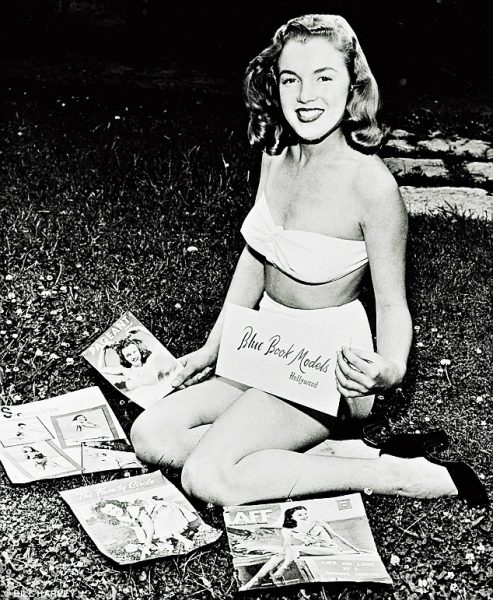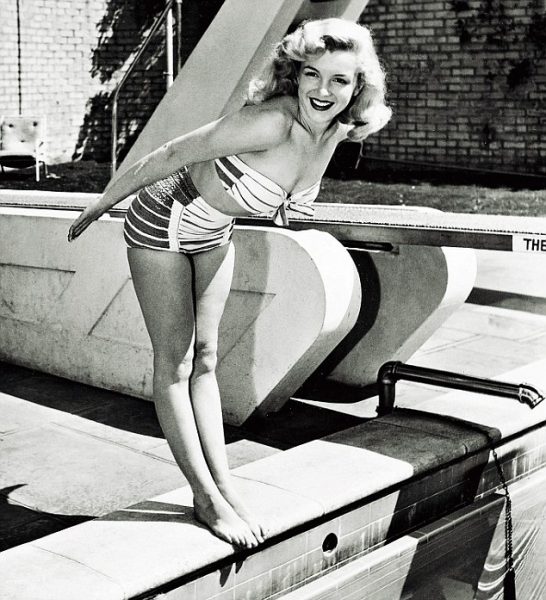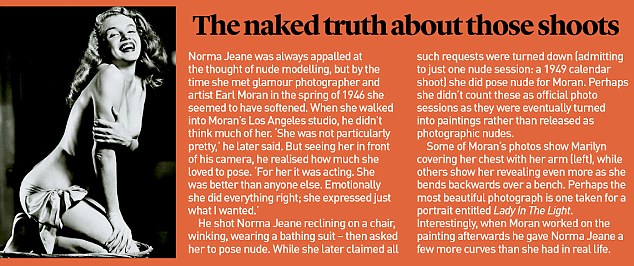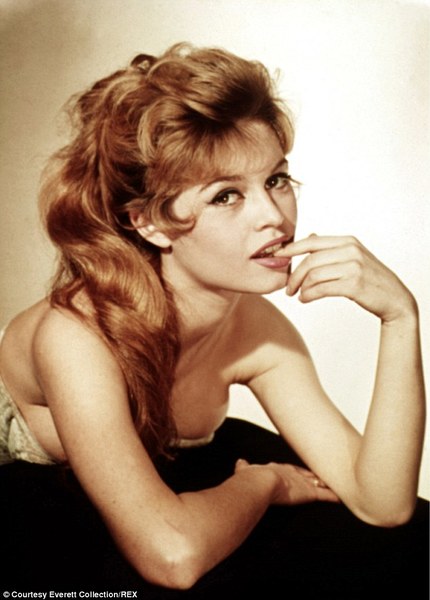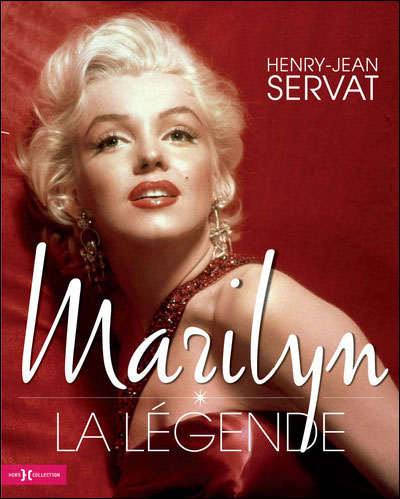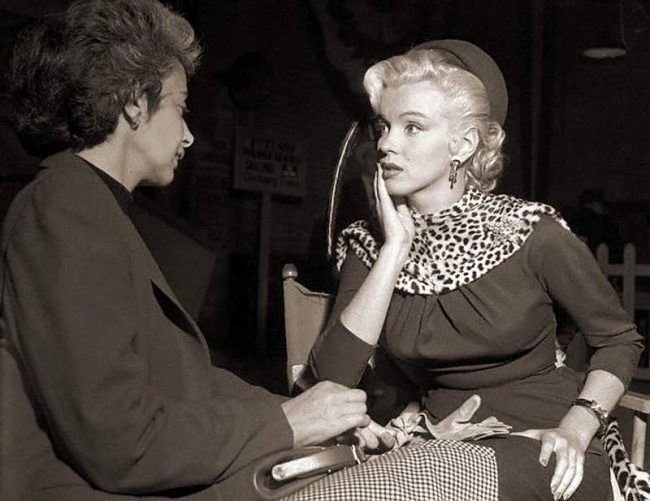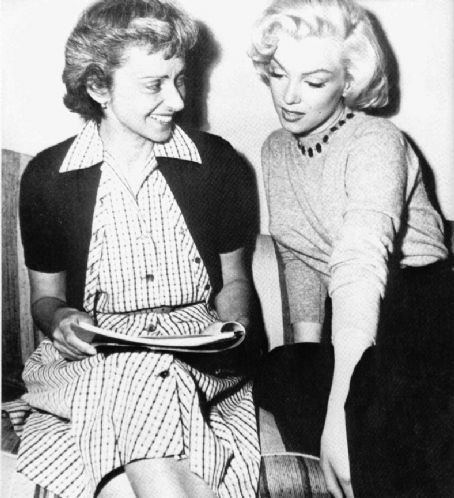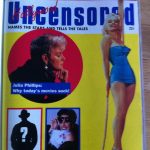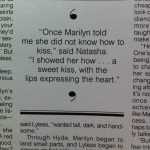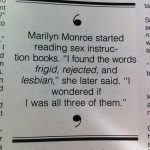
The long-awaited new book by Michelle Morgan and Astrid Franse, Before Marilyn: The Blue Book Modelling Years, will be published in the UK on July 6. It is also the subject of a six-page article in today’s Mail on Sunday, with Norma Jeane gracing the cover of its supplement magazine. The Mail Bookshop is also offering a pre-order of Before Marilyn at a reduced price of £18.75. A US edition will follow in November, but if you simply can’t wait that long, the UK version of Before Marilyn can also be pre-ordered via The Book Depository.

“Twenty years ago, Astrid and Ben Franse, owners of a Fifties memorabilia store, were in a vintage shop in Los Angeles when the shopkeeper came over with a box, telling them: ‘It’s press clippings and pictures of Marilyn Monroe. I only got a quick look. It was take it or leave it.’
The couple bought the box and took it home to the Netherlands, where it was stored under a desk and promptly forgotten – until 2012 when a dealer telephoned from the U.S. about a client who was a big Marilyn fan.
Ben remembered the box and went to check what it contained. He was stunned. It was the archive of Blue Book, the modelling agency that launched Marilyn’s career.
There were negatives, letters, telegrams, photos and worksheets.
Using this treasure trove of unseen images, Astrid and Marilyn expert Michelle Morgan, author of Marilyn Monroe: Private And Undisclosed, have been able to tell the little-known story of Marilyn before she was famous…
Emmeline Snively appraised the girl in front of her in the office of her model agency.
She was ‘in a simple white dress and armed with her portfolio, which offered no more than a few snaps. You wouldn’t necessarily wear a white dress on a modelling job, and it was as clean and white and ironed and shining as she was.’
It was August 2, 1945 and this was the first meeting between Norma Jeane Dougherty – later known as Marilyn Monroe – and the mentor who launched her career.
Many in modelling believed Blue Book was essentially an escort agency, providing girls for lonely businessmen staying at the hotel to take to dinner.
‘The LAPD kept a close watch,’ said a source who knew the agency at the time.
Snively admitted: ‘Many of my girls whose husbands were overseas dated on several nights of the week. But not Norma Jeane. She was interested only in legitimate assignments.’
The reception walls were covered in glossy photos of clients past and present, as was Snively’s office. There was a statue of the ancient Eygptian princess Nefertiti on her desk – ‘the most beautiful woman of her era,’ Snively believed.
The boss spoke in an English accent, though she was American. And she was picky about who she took on.
Snively later recalled, ‘She had a white dress which looked terrific on her, although models usually shy away from white. It accentuated her bust and called attention to her figure. It was extremely tight across the front.’
The only other things she seemed to own were a bathing suit and a blue suit ‘that didn’t do a thing for her’, according to Snively.
‘She had a girl next door look. All right, you never saw a girl next door who looked like Marilyn but that’s how she looked the day she came in. For me that’s how she always looked.’
Norma Jeane’s looks, enthusiasm and naivity won over the agency owner. She signed her up and set about training her in grooming, presentation and coordination. There was ‘good solid work on my part to analyse and develop her best points (no pun intended)’.
She determined that Norma Jeane could do two types of modelling. She couldn’t enter beauty contests – a useful way of raising a model’s profile – because she was married, which disqualified her.
Nor could she do catwalk modelling. As Snively observed: ‘She did have a pleasant personality; an all-American girl personality – cute, wholesome and respectable.
‘There was no sultry sexiness about her. That came much later, although I did realise immediately that Marilyn would never do as a fashion model. Most fashion models are tall, sophisticated-looking and slim-chested. Marilyn was none of these.’
And there was another problem – her walk. Her famous ‘wiggle walk’ went against everything a catwalk model was ever trained to do.
It has been claimed that she used to cut part of the heel from one shoe, causing her bottom to rock from side to side. Another suggestion was she had suffered from an illness as a child, resulting in a slight limp. Snively had a different theory.
‘She’s double-jointed in the knees, so she can’t relax and that is why her hips seem to sway.
‘She couldn’t stand with a relaxed knee like most models, because her knees would lock in a stiff-legged position. Her walk is a result of that locking action… This she turned into an asset.’
While Norma Jeane was eager to soak up any advice about her smile, she was less happy with what Snively suggested for her hair: bleach and straightening. There was no way the young model could afford the upkeep of such a style, and she had no wish to be made into a glamour girl.
‘She was a believer in naturalness,’ wrote Snively. ‘Any suggestions about lightening her hair or even styling it met with defeat.’
‘Look darling,’ Snively told her. ‘If you intend to go places in this business, you’ve got to bleach and straighten your hair; your face is a little too round and a hair job will lengthen it. Don’t worry about money, I’ll keep you working.’
She was hired for a shampoo ad on the understanding that she would sort out her hair. When the photographer offered to pay for the process, Norma Jeane finally agreed to go to the Frank and Joseph salon in Hollywood.
Snively loved it. ‘It was bleached to take it out of the obscurity of dishwater blonde,’ she wrote.
‘Marilyn emerged a truly golden girl… She went into her bathing-suit stage, and the demand for her was terrific.
‘She averaged $150 a week, and men began talking to her about going into motion pictures.’
It was the beginning of Norma Jeane’s transformation into Marilyn Monroe and from modelling to movies. Around this time Marilyn was walking down the street one day when a man pulled his Cadillac up next to her. He rolled down the window and told the young woman that she was so beautiful she should be in movies.
The man said he worked for the Goldwyn Studio and she should come for an audition.
Unfortunately, his studio turned out to be a rented suite, where the ‘executive’ persuaded her to pose in a variety of inappropriate positions, while reading a script.
‘All the poses were reclining, although the words I was reading didn’t seem to call for that position,’ Marilyn recalled.
‘Naive as I was, I soon figured this wasn’t the way to get a job in the movies. I manoeuvred toward the door and made a hasty exit.’
But magazine covers led to items in gossip columns which in turn led to a screen test at Twentieth Century Fox.
Snively later recalled a chat with Marilyn, now married to baseball star Joe DiMaggio, the actress confessed that she felt inadequate in her career.
‘She didn’t feel she was a qualified actress [but] how could she? She’d signed her first contract before she had her first acting lesson.
‘God, I wanted to cry for her then. This can be the loneliest town in the world and it’s even lonelier for you if you’re on top of the heap.’
By summer 1962 Marilyn was not in regular contact with Snively. But, having been fired from her last film, Something’s Got To Give, after missing numerous days through illness and through travelling to New York to sing for President Kennedy, she did a shoot for Blue Book, posing for amateur photographers. These photos have never come to light.
Then, on August 5, the actress was found dead, victim of an overdose. She was just 36.
Snively reflected on her untimely death. ‘We should have known that a person who works that hard and puts everything else aside for a career, is looking for love – not just a job.’”
